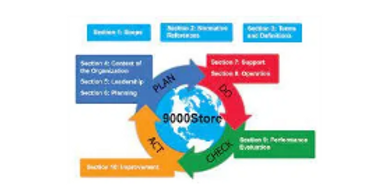#Q.A. activity should start at the beginning of the design project. The earlier #Q.A. starts, the more beneficial it is to set the standard for achieving quality. Note I said achieve quality as you can never entirely ensure quality. To be considered almost perfect, you must achieve 3.6 defects per one million widgets manufactured per Six-Sigma. Furthermore, the cost, time, testing, and production efforts are challenging if the Q.A. activities become delayed in the stage-gate design and innovation process. You need a world-class manufacturer to design and develop your products.
Quality Control Questions to ask Your Manufacturer
In manufacturing, proper quality control protocols must be in place to ensure a quality product. However, for designers, engineers, and entrepreneurs looking to take advantage of the benefits of a concept-to-creation manufacturer like Girard Equipment, Inc., a few key questions can help determine which manufacturing facility to entrust your design to.
Can you support me in optimizing my CAD design for manufacturing?
It's essential to make sure you've selected the correct manufacturing process for your design, and it's equally important to have a design optimized for manufacturing. There are ways to design products to reduce the time and money spent manufacturing while achieving the same results. In addition, having an engineering team checking your design will make your life easier and prevent avoidable errors.
Do you test incoming materials?
The quality of raw materials varies; to ensure the materials are not deceitful or non-conforming, ask the manufacturer for test certifications and Q.C. inspectors.
What calibration tools do you use?
For manufacturing techniques like C.N.C. machines, the appropriate tolerances and angles are required. It's also beneficial to find out what calibration tools are being used. There is sophisticated equipment for testing bar and plate stock for manufacturing.
What type of measurement tools do you use on finished parts?
These include calipers, bubble-leak, micrometers, pressure gauges, thread and ring gauges, and surface plates. These are the classic measurement instruments used in manufacturing.
The primary process used to make the steel, brass, and aluminum parts for the Mina V2 was C.N.C. machining. Each part was made using a tool and C.N.C. machine appropriate for the tolerances and angles required. A turning center is the best way to make precisely round and concentric parts like a spring mount. In that case, a stainless-steel rod is held firmly in the jaws of the rotating chuck to prevent any unwanted vibration as it's being turned down to the final size.
With the need for tight tolerances, Star decided to machine the most complex parts on its 5-axis C.N.C. mill. Having such equipment helps to avoid moving the piece from one holding fixture to another on different machines, making it tough to hold tight tolerances.
For instance, a parallel spring mount with multiple faces and rounded edges made it difficult to hold correctly when drilling out the center hole. In the end, Star created a unique fixture to hold this part securely to maintain the correct dimensions.
Once the primary machine work was finished, all-aluminum parts were bead blasted, cleaned, and prepared for aluminum anodizing. Anodizing improves the corrosion resistance of the aluminum, provides a hard, scratch-resistant surface, and enhances the cosmetic appearance.
Not all alloys accept the anodizing treatment equally well, but AL-6061 is a good choice and produces excellent results. After bead blasting and cleaning, the aluminum has a non-reflective, matte finish.
After anodizing, the parts have a uniform, semi-gloss dark blue metallic coating. Anodizing adds a thin layer of material to about 3 to 5 microns onto the surface. This is enough to interfere with close fit tolerances and machine threads, so threaded holes must be cleaned after anodizing, exposing bare metal.
To Limit Product #Defects?
The best time to prevent product #defects is during the sourcing and pricing process. #Quality is built into a product, not added after the fact.
#Tip:
1. Don't negotiate the price too low with suppliers
Auditing a potential supplier's # Q.M.S. helps you anticipate potential quality problems before beginning production.
A quality control checklist is the most critical tool for ensuring your supplier and # Q.C. staff inspecting your product understand your expectations.
Suppliers and #Q.C. professionals usually divide their checklist into four distinct sections:
1.) Product requirements
2.) Packaging requirements
3.) On-site product tests and checks
4.) Defect classification
By following these guidelines, you should define different defects under different categories as you see fit based on your operation.
Total Quality Management
Continuous improvement is a requirement for competitiveness and focuses on process & structure rather than just results. Structure (strategy and design), process (support and stimulate), outcome (carrot & Stick), metaphorically speaking.
Quality ISO 9001 2015 Process Control.
https://www.linkedin.com/posts/mikeshewkc_home-activity-6738841266982932480-2fde?utm_source=linkedin_share&utm_medium=member_desktop_web







